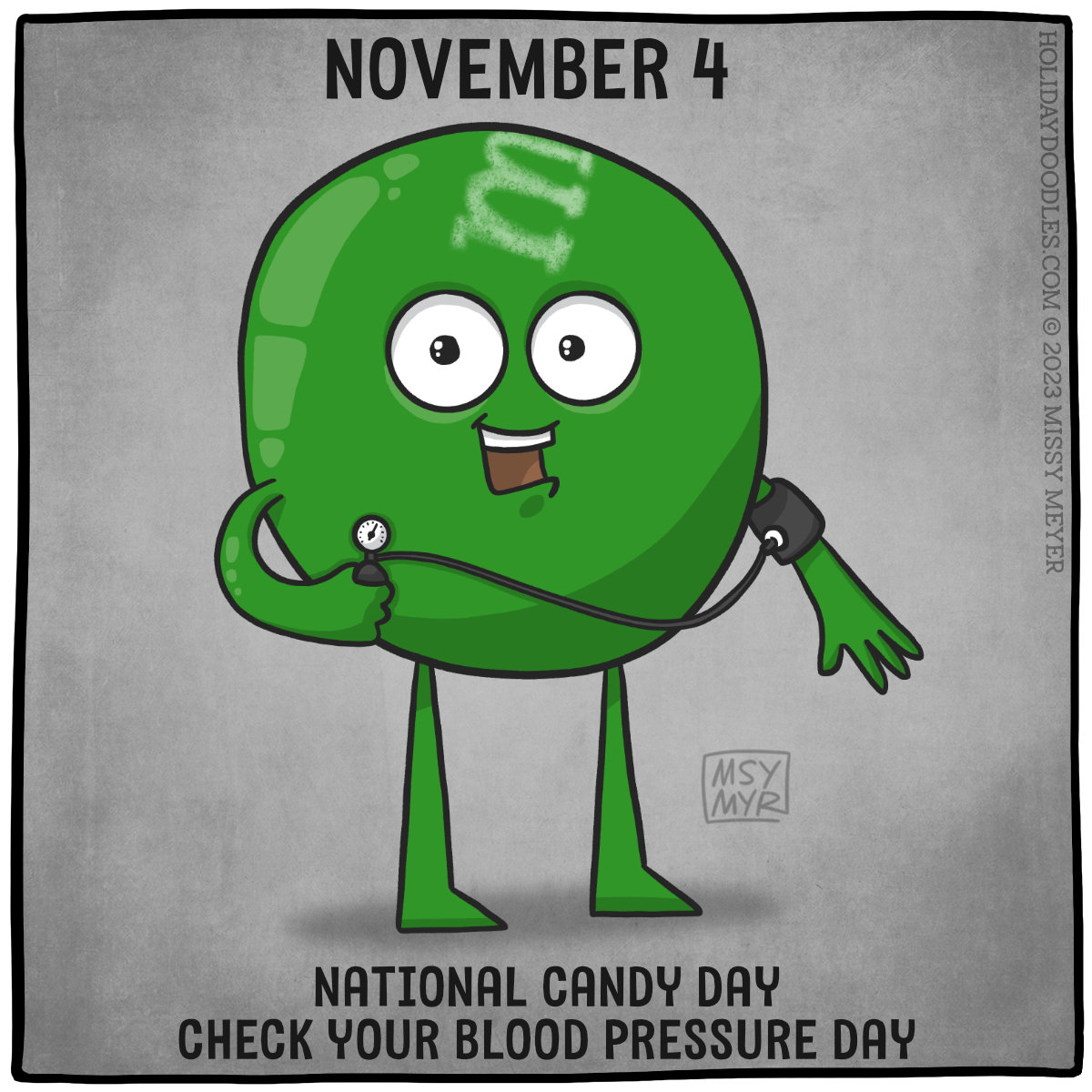
Why checking your blood pressure continously for a day is best – Why checking your blood pressure continuously for a day is best? This method offers a unique insight into your blood pressure patterns, revealing how it fluctuates throughout the day. Understanding these fluctuations is key to recognizing potential health issues and tailoring treatment plans for optimal health.
Blood pressure, a vital sign, measures the force of blood against artery walls. Normal ranges vary, and fluctuations can signal underlying problems. Continuous monitoring captures these subtle changes, providing a detailed picture of how your body responds to different activities and stresses. A table of blood pressure readings, alongside the time of day and activity level, is a powerful tool to visually understand your personal pattern.
This detailed information is invaluable in identifying trends and anomalies that could be missed with traditional, less frequent checks.
Introduction to Continuous Blood Pressure Monitoring
Blood pressure, a crucial vital sign, reflects the force exerted by blood against the walls of blood vessels. Understanding and monitoring blood pressure is essential for identifying and managing various health conditions, including hypertension (high blood pressure) and hypotension (low blood pressure). Maintaining a healthy blood pressure range is vital for cardiovascular health, as it directly impacts the heart and blood vessels.
Consistent monitoring allows healthcare professionals to track trends and adjust treatment plans as needed.Blood pressure is measured in millimeters of mercury (mmHg) and is typically reported as two numbers: systolic pressure (the pressure in the arteries when the heart beats) and diastolic pressure (the pressure in the arteries when the heart rests between beats). Variations in blood pressure readings can be significant indicators of underlying health issues or changes in physiological states.
A deeper understanding of these fluctuations is critical for accurate diagnoses and effective management of health conditions.
Normal Blood Pressure Ranges and Variations
Normal blood pressure is generally considered to be below 120/80 mmHg. However, this range can vary based on individual factors like age, sex, and overall health. Variations in blood pressure are common throughout the day and can be influenced by various factors, including physical activity, stress levels, and emotional states. These fluctuations are a normal physiological response to changes in activity and environment.
Recognizing these fluctuations is key to understanding how blood pressure reacts to different situations.
Blood Pressure Fluctuations and Their Significance
Understanding the nuances of blood pressure fluctuations is essential for proactive health management. Significant drops or increases in blood pressure can indicate underlying health conditions, and it’s vital to monitor these changes. For instance, a sudden, significant increase in blood pressure could suggest a potential hypertensive crisis, while a persistent decrease could indicate a more severe health issue.
Example Blood Pressure Log
This table demonstrates a sample blood pressure log over a 24-hour period, showcasing how blood pressure readings can change based on activity levels and time of day.
| Blood Pressure Reading (mmHg) | Time of Day | Activity Level |
|---|---|---|
| 120/80 | 7:00 AM | Waking up, light activity |
| 125/85 | 8:00 AM | Breakfast, light activity |
| 130/88 | 9:00 AM | Work, moderate activity |
| 118/78 | 12:00 PM | Lunch break, light activity |
| 122/82 | 1:00 PM | Work, moderate activity |
| 128/84 | 6:00 PM | Dinner, light activity |
| 135/88 | 7:00 PM | Exercise, moderate activity |
| 124/80 | 9:00 PM | Relaxing, light activity |
| 115/75 | 11:00 PM | Sleep, resting |
Methods for Continuous Blood Pressure Monitoring: Why Checking Your Blood Pressure Continously For A Day Is Best
Tracking blood pressure continuously over a 24-hour period offers invaluable insights into how blood pressure behaves throughout the day, revealing patterns and fluctuations that might be missed with occasional readings. This continuous monitoring allows for a more accurate assessment of individual blood pressure profiles, leading to a more comprehensive understanding of cardiovascular health.Different devices offer varying levels of accuracy, cost, and convenience, each with specific strengths and weaknesses.
Understanding these differences is crucial for selecting the most appropriate method for a given individual and their specific needs. Choosing the right device ensures reliable data collection and contributes to a more accurate and comprehensive understanding of an individual’s blood pressure.
Different Devices for Continuous Blood Pressure Monitoring
Various devices are available for continuous blood pressure monitoring, each with its own characteristics. Understanding the strengths and limitations of each type is vital for making informed choices. Factors such as cost, accuracy, and portability play crucial roles in the selection process.
- Oscillometric Devices: These devices measure blood pressure using the principle of oscillation. They are generally less expensive and more portable compared to other methods. However, their accuracy can be influenced by factors like patient movement and cuff fit. Some models provide continuous readings, while others require manual data capture. The accuracy of these devices can vary depending on factors such as patient compliance and device quality.
- Automated Cuff-Based Devices: These devices employ automated cuffs and sensors to continuously measure blood pressure. They provide more continuous monitoring compared to manual devices, though their accuracy can be affected by arm movement or changes in posture. These devices are frequently used in clinical settings and some home monitoring setups. The portability of automated cuff-based devices varies depending on the specific model and its battery life.
- Invasive Devices: These devices involve a catheter or sensor inserted directly into an artery to measure blood pressure continuously. They offer high accuracy and are crucial in intensive care units or for patients requiring very precise data collection. However, they are invasive and pose a higher risk of complications. The cost is significantly higher and require specialized medical personnel for insertion and maintenance.
The level of invasiveness must be carefully weighed against the potential benefits of continuous monitoring.
Procedures for Accurate Use
Correct usage is crucial for obtaining reliable data. Adhering to the manufacturer’s instructions and ensuring proper device calibration are vital steps for accurate blood pressure readings. Incorrect procedures may lead to inaccurate data, undermining the value of the monitoring process.
- Device Calibration: Regular calibration is essential to maintain accuracy. Instructions provided by the manufacturer should be carefully followed for proper calibration procedures.
- Cuff Selection: Using a cuff that is appropriate for the patient’s arm size is critical for accurate readings. An improperly sized cuff can result in inaccurate readings. Cuffs that are too small may give falsely high readings, while cuffs that are too large may result in falsely low readings.
- Patient Positioning: Maintaining a stable and comfortable position during monitoring is crucial. Patient movement can disrupt the readings. The patient should be relaxed and comfortable to minimize movement artifacts. Providing a supportive environment will increase the chances of obtaining accurate readings.
Comparison of Monitoring Devices
A comparative analysis of devices based on accuracy, cost, and portability provides a clear overview of the options available. This table highlights the strengths and weaknesses of each method.
| Device Type | Accuracy | Cost | Portability |
|---|---|---|---|
| Oscillometric Devices | Moderate | Low | High |
| Automated Cuff-Based Devices | High | Medium | Medium |
| Invasive Devices | High | High | Low |
Benefits of Continuous Monitoring

Continuous blood pressure monitoring offers a wealth of advantages over traditional methods. It provides a comprehensive, real-time picture of blood pressure fluctuations, enabling a deeper understanding of individual patterns and responses to various stimuli. This detailed insight can be invaluable in identifying underlying health issues and tailoring treatment strategies.
Identifying Patterns in Blood Pressure Readings
Continuous monitoring allows for the observation of subtle and significant changes in blood pressure throughout the day. This reveals patterns that might be missed with sporadic readings. For example, a person might have consistently elevated blood pressure during periods of high stress, or experience a dip in pressure after meals. These patterns are crucial for understanding individual blood pressure dynamics and for refining interventions.
Recognizing Stress Responses and Triggers
By tracking blood pressure over an extended period, individuals can pinpoint situations or activities that lead to elevated readings. This provides valuable insight into stress responses and triggers. For instance, a person might discover that public speaking or commuting are significant contributors to their blood pressure elevation. Understanding these triggers allows for proactive strategies to manage stress and prevent adverse reactions.
Diagnosing Underlying Health Issues
The patterns revealed through continuous monitoring can help identify underlying health conditions. Consistent high blood pressure readings, coupled with other symptoms, can signal potential hypertension or related disorders. A persistent drop in blood pressure, especially during specific activities, might indicate other conditions, such as postural hypotension. Identifying these patterns is critical for early intervention and preventative measures.
Potential Health Conditions Detected through Continuous Monitoring
Understanding the potential health conditions detectable through continuous monitoring is essential for appropriate action. This table provides a glimpse into the range of possibilities.
| Potential Health Condition | Possible Indicators in Continuous Monitoring Data |
|---|---|
| Hypertension (High Blood Pressure) | Sustained elevated blood pressure readings throughout the day, especially during periods of stress or activity. |
| Postural Hypotension | Significant drop in blood pressure upon standing or changing positions, possibly accompanied by dizziness or lightheadedness. |
| Orthostatic Hypotension | Significant drop in blood pressure when transitioning from a sitting or lying position to standing, possibly causing lightheadedness or fainting. |
| White Coat Hypertension | Elevated blood pressure readings in a clinical setting, but normal readings during daily activities. Continuous monitoring can distinguish between these situations. |
| Aortic Stenosis | Sustained elevated blood pressure readings in specific conditions, such as exertion or standing, combined with other symptoms like chest pain. Continuous monitoring could reveal this trend. |
| Pheochromocytoma | Significant fluctuations in blood pressure, potentially including sudden and extreme spikes, along with other symptoms like sweating or headaches. Continuous monitoring can aid in the detection of these patterns. |
Potential Applications of Continuous Monitoring
Continuous blood pressure monitoring, unlike traditional methods, offers a wealth of information about blood pressure fluctuations throughout the day and night. This continuous data stream provides a more comprehensive picture of cardiovascular health, enabling a more personalized and effective approach to treatment and care. This detailed understanding is particularly valuable in various applications, from optimizing home care to conducting rigorous clinical trials.This detailed monitoring allows for the identification of patterns and trends in blood pressure that might be missed with intermittent measurements.
This capability has significant implications for tailoring treatment plans, improving patient outcomes, and ultimately, enhancing the overall management of cardiovascular health.
Home Care Applications
Continuous blood pressure monitoring empowers patients to actively participate in their healthcare, especially those with chronic conditions like hypertension or heart failure. At home, patients can meticulously track their blood pressure readings throughout the day, including periods of activity, rest, and sleep. This detailed record provides valuable insights into individual responses to various lifestyle factors. This data can be used to adjust medications, dietary habits, and exercise routines, leading to improved blood pressure control.
Clinical Trials
Continuous blood pressure monitoring plays a crucial role in clinical trials evaluating the efficacy of new drugs or treatments for hypertension. By continuously recording blood pressure readings, researchers can obtain a more accurate and comprehensive view of the treatment’s effect on blood pressure control over a longer period. This comprehensive data allows for a better understanding of the treatment’s effectiveness, potential side effects, and overall impact on cardiovascular health.
This data-driven approach minimizes potential biases associated with intermittent measurements and facilitates more reliable conclusions.
Patient Education and Empowerment, Why checking your blood pressure continously for a day is best
Continuous blood pressure monitoring empowers patients with a deeper understanding of their own health. By visualizing their blood pressure patterns, patients can recognize triggers for elevated readings, such as stress or certain activities. This knowledge fosters a proactive approach to managing their condition. This visual representation facilitates better communication with healthcare providers, enabling them to make informed decisions based on a complete picture of the patient’s health.
Tailoring Treatment Plans
Continuous blood pressure monitoring data enables healthcare professionals to create personalized treatment plans tailored to individual patient needs. The data reveals unique patterns and fluctuations, allowing for the identification of specific factors influencing blood pressure. For example, if a patient’s blood pressure consistently rises during periods of stress, the treatment plan can incorporate stress-reduction techniques. Similarly, if a patient’s blood pressure is stable during certain activities but rises significantly after meals, dietary adjustments may be necessary.
Improving Patient Outcomes
By providing a detailed picture of blood pressure fluctuations, continuous monitoring facilitates early detection of potential problems. For example, sudden or significant increases in blood pressure may signal a developing complication, allowing for timely intervention. This early detection, often missed with intermittent measurements, can lead to better outcomes and reduce the risk of severe cardiovascular events. This proactive approach ultimately contributes to improved patient well-being and longevity.
Summary Table of Applications
| Application | Benefits |
|---|---|
| Home Care | Improved self-management, personalized lifestyle adjustments, better blood pressure control. |
| Clinical Trials | More accurate and comprehensive data on treatment efficacy, reduced bias, reliable conclusions. |
| Patient Education | Increased patient understanding of their health, proactive management, improved communication with healthcare providers. |
| Tailoring Treatment Plans | Personalized treatment plans based on individual patient data, identification of specific factors affecting blood pressure, improved treatment outcomes. |
| Improving Patient Outcomes | Early detection of potential problems, timely intervention, reduced risk of severe cardiovascular events, improved patient well-being and longevity. |
Data Analysis and Interpretation

Unraveling the insights hidden within a day’s worth of continuous blood pressure readings requires a structured approach. Simply observing the numbers isn’t enough; we need to analyze patterns, identify anomalies, and understand the context of these fluctuations. This process allows us to gain a deeper understanding of individual patient responses to various factors and potentially predict future health trends.Effective analysis involves not just technical skills but also a deep understanding of the patient’s unique health history and lifestyle.
A crucial aspect is to consider individual factors like medication, diet, activity levels, and stress levels. These contextual elements are vital to properly interpreting the data and drawing meaningful conclusions.
Analyzing Collected Blood Pressure Data
Interpreting continuous blood pressure data necessitates a systematic approach. First, data should be organized chronologically, enabling the identification of trends over time. Subsequently, data points should be analyzed for consistency and deviations from expected values. Statistical tools like mean, standard deviation, and percentiles can assist in assessing the overall blood pressure patterns. By meticulously tracking these details, healthcare professionals can recognize subtle changes that might indicate underlying health issues or treatment effectiveness.
Identifying Trends and Anomalies
Identifying trends and anomalies in blood pressure data is a critical component of continuous monitoring. Trends represent consistent patterns of change, either upward or downward, in blood pressure over a period. Identifying these patterns can provide insights into lifestyle factors influencing blood pressure or the effectiveness of ongoing treatments. Conversely, anomalies represent unexpected deviations from the typical blood pressure pattern.
Tracking your blood pressure over a 24-hour period gives you a much clearer picture of its fluctuations than a single reading. This is crucial for understanding how various factors, like stress or activity, affect your numbers. For example, if you’re interested in how Lady Gaga’s health journey, including her lady gaga fibromyalgia twitter diagnosis , might have influenced her blood pressure patterns, continuous monitoring would provide invaluable data.
Ultimately, this detailed picture helps doctors pinpoint potential problems and tailor treatment plans, making it a powerful tool for health management.
These deviations may be triggered by sudden changes in activity, emotional stress, or medication interactions.
Patient-Specific Factors in Data Interpretation
Interpreting continuous blood pressure data requires careful consideration of patient-specific factors. A patient’s age, medical history, medications, and lifestyle significantly impact their blood pressure readings. For instance, a patient with a history of hypertension and taking multiple medications might exhibit different blood pressure responses to stress or activity compared to a younger, healthier individual. Recognizing these nuances allows for more accurate interpretations and personalized recommendations.
Data Visualization Methods
Visual representations of blood pressure data greatly enhance comprehension and facilitate trend identification. Visualizations provide a clearer picture of the data’s patterns, anomalies, and overall behavior. A well-chosen visualization method can highlight critical information, making it easier for both patients and healthcare providers to understand the data’s significance.
| Visualization Type | Description | Example |
|---|---|---|
| Line Graph | Displays blood pressure readings over time, allowing for visualization of trends and fluctuations. | A line graph illustrating a patient’s systolic blood pressure throughout the day, showing a general upward trend after lunch. |
| Scatter Plot | Plots blood pressure readings against other variables, like time of day or activity levels, for correlation analysis. | A scatter plot showing systolic blood pressure readings against heart rate, highlighting a positive correlation. |
| Box Plot | Summarizes blood pressure distribution across different time intervals, providing insights into variability and potential outliers. | A box plot showing the distribution of diastolic blood pressure readings during different hours of the day, highlighting a peak in the afternoon. |
| Heatmap | Displays blood pressure readings in a color-coded format, allowing for visual identification of high or low readings and trends. | A heatmap showing blood pressure readings over 24 hours, with darker colors representing higher readings, potentially highlighting elevated pressure during specific periods. |
Considerations and Limitations
Continuous blood pressure monitoring, while offering valuable insights, comes with inherent limitations. Understanding these factors is crucial for interpreting the data accurately and avoiding misinterpretations. Careful consideration of potential issues ensures the monitoring process yields meaningful and reliable results, ultimately benefiting patient care.The accuracy of continuous blood pressure readings can be affected by several factors, including the specific device used, the patient’s activity level, and their emotional state.
Tracking your blood pressure over a 24-hour period gives a much clearer picture of your cardiovascular health than a single reading. This detailed view helps doctors understand how your blood pressure fluctuates throughout the day, which is crucial for assessing your 10 year cholesterol risk 10 year cholesterol risk. Understanding these fluctuations is key to identifying potential issues and tailoring a personalized plan to manage your risk factors.
Ultimately, continuous monitoring provides the most accurate data for effective preventative care.
For instance, a patient who is highly stressed or moving frequently may experience fluctuating readings, potentially obscuring the true picture of their blood pressure patterns. This highlights the importance of patient cooperation and understanding of factors influencing the data collection process.
Potential Limitations of Devices
Different continuous blood pressure monitoring devices employ varying technologies and methodologies. Some devices may be more susceptible to interference from external factors, like motion or electromagnetic fields. The quality of the sensor placement and the patient’s adherence to device instructions can also impact the accuracy of the readings. Calibration errors or faulty sensors within the device itself can lead to inaccurate or misleading data.
Tracking your blood pressure continuously for a day gives you a clearer picture of its fluctuations. This is crucial for understanding potential underlying issues, like the sometimes-overlooked link between blood pressure and depression after a heart attack. Depression after heart attack can significantly impact blood pressure readings, making consistent monitoring even more vital for effective management and overall well-being.
This detailed picture helps you and your doctor understand how your body reacts to various activities and stresses throughout the day, ultimately leading to more personalized and effective treatment plans.
Factors Affecting Accuracy
Several patient-related factors can affect the accuracy of continuous blood pressure readings. For example, body movement, particularly involuntary ones, can introduce noise into the data, making it difficult to isolate the true blood pressure fluctuations. Patients who are not comfortable with the monitoring device or who experience discomfort from the sensor placement might alter their behavior, impacting the natural pressure patterns.
Emotional stress, anxiety, and pain can also influence blood pressure readings, making it harder to isolate the effect of other factors.
Ethical Concerns
Privacy and data security are paramount when dealing with continuous health monitoring. Patient confidentiality must be rigorously maintained, ensuring that sensitive data is protected from unauthorized access. Furthermore, the potential for misuse of the data, such as for discriminatory purposes, needs careful consideration and preventative measures. There is also the issue of informed consent, where patients need to be fully aware of the implications of continuous monitoring, including data collection, storage, and potential uses.
Challenges in Interpreting Data
| Challenge | Explanation | Impact |
|---|---|---|
| Inconsistent Readings | Continuous blood pressure data might display inconsistent readings, potentially reflecting periods of higher or lower noise levels or errors in measurement. | Difficult to establish consistent patterns and trends, leading to potentially misinformed clinical decisions. |
| Sensor Drift | Sensors used in continuous monitoring may experience gradual changes in their calibration over time, potentially leading to systematic errors in measurements. | Data may gradually deviate from true blood pressure readings, affecting the reliability of conclusions drawn from the monitoring data. |
| Artifacts | External factors, such as electromagnetic interference or patient movement, can introduce artifacts into the data, distorting the blood pressure signals. | Artifacts may mask true blood pressure patterns, leading to misinterpretations and potentially impacting treatment decisions. |
| Data Overload | The sheer volume of continuous blood pressure data can be overwhelming, potentially hindering the ability to analyze and interpret trends and patterns. | Time and resources may be required to manage, filter, and analyze large volumes of data, possibly delaying the delivery of effective treatment. |
Future Directions and Innovations
Continuous blood pressure monitoring is rapidly evolving, driven by the need for more accurate, reliable, and accessible methods. This evolution promises to significantly impact patient care and potentially revolutionize how we understand and manage cardiovascular health. Emerging technologies are pushing the boundaries of what’s possible, leading to exciting prospects for the future.
Emerging Technologies
Advancements in miniaturization, sensor technology, and wireless communication are paving the way for increasingly sophisticated and comfortable continuous blood pressure monitoring devices. Implantable sensors, for instance, are under development, offering long-term, unobtrusive measurements. These advancements promise improved accuracy and reduced user burden compared to current methods. Furthermore, the development of more sophisticated algorithms to process and interpret the vast amount of data generated by continuous monitoring is critical.
These algorithms will allow for more nuanced understanding of blood pressure fluctuations and patterns.
Integration with Other Health Data
The potential for integrating continuous blood pressure monitoring with other health data streams is immense. Correlating blood pressure readings with heart rate variability, activity levels, sleep patterns, and even environmental factors could provide a comprehensive view of an individual’s health status. This holistic approach to health data analysis could lead to earlier detection of cardiovascular risks and more personalized treatment plans.
Imagine a future where a patient’s smartwatch not only tracks their steps but also provides real-time insights into their blood pressure trends, potentially alerting them or their doctor to emerging health issues.
Potential Future Applications
The implications of continuous blood pressure monitoring extend far beyond individual patient care. Research is exploring applications in various fields, from sports medicine to space exploration. For athletes, continuous monitoring could optimize training regimes and help identify potential risks. In space travel, continuous monitoring could aid in assessing the impact of microgravity on cardiovascular health. The use of continuous blood pressure monitoring in clinical trials could also lead to more efficient and reliable data collection, speeding up the process of drug development and treatment optimization.
Table of Innovations
| Innovation | Description | Potential Impact |
|---|---|---|
| Implantable Sensors | Tiny, implantable sensors that measure blood pressure continuously and transmit data wirelessly. | Long-term, unobtrusive monitoring with high accuracy. |
| Advanced Algorithms | Sophisticated algorithms that analyze and interpret vast amounts of blood pressure data to identify trends and patterns. | More nuanced understanding of blood pressure fluctuations and potential risks. |
| Integration with Wearable Devices | Combining continuous blood pressure monitoring with existing wearable technology like smartwatches and fitness trackers. | Enhanced user experience, convenience, and potential for early detection of health issues. |
| Remote Patient Monitoring | Continuous blood pressure monitoring data is relayed to healthcare providers in real-time, enabling remote patient monitoring and management. | Improved access to care, especially for patients in remote areas or with limited mobility. |
| Personalized Treatment Plans | Data from continuous monitoring is used to create personalized treatment plans tailored to individual patient needs. | Increased effectiveness of treatments, reduced side effects, and improved patient outcomes. |
Illustrative Example of Continuous Monitoring Data
Continuous blood pressure monitoring offers a wealth of data, providing a comprehensive picture of cardiovascular health. Understanding this data is crucial for accurate diagnosis and effective treatment. Analyzing patterns in these readings can reveal insights into how various factors, such as activity levels, stress, and medication, influence blood pressure.A typical day’s blood pressure readings can reveal a dynamic pattern, fluctuating with activities and rest periods.
Visualizing these readings in a clear and concise format is key to interpreting the information.
Patient Blood Pressure Data (24-Hour Period)
This table demonstrates a single patient’s blood pressure throughout a 24-hour period. The data reflects typical variations.
| Time | Systolic BP (mmHg) | Diastolic BP (mmHg) |
|---|---|---|
| 00:00 | 120 | 80 |
| 02:00 | 118 | 78 |
| 04:00 | 122 | 82 |
| 06:00 | 125 | 85 |
| 08:00 | 128 | 88 |
| 10:00 | 132 | 90 |
| 12:00 | 135 | 92 |
| 14:00 | 130 | 88 |
| 16:00 | 128 | 86 |
| 18:00 | 125 | 84 |
| 20:00 | 122 | 82 |
| 22:00 | 120 | 80 |
Data Pattern and Implications
The table illustrates a typical diurnal variation in blood pressure. The blood pressure generally rises during the day, peaking around midday, and then gradually declines throughout the evening and night. This pattern is common and often associated with normal physiological processes. A sustained elevated blood pressure throughout the 24-hour period, or significant fluctuations unrelated to typical activity patterns, could indicate underlying conditions.
The readings should be analyzed in the context of the patient’s overall health, lifestyle, and any medications being taken. For instance, a sudden, significant drop in blood pressure could indicate a medication side effect or an underlying health concern, requiring immediate medical attention.
Epilogue
In conclusion, continuous blood pressure monitoring provides a comprehensive understanding of your cardiovascular health. It goes beyond a single reading, revealing patterns and potential issues that might otherwise remain hidden. By analyzing the data, you and your doctor can tailor a treatment plan that addresses your specific needs and improves overall well-being. This continuous monitoring is an invaluable tool for proactive health management.
With the right tools and analysis, it’s a significant step toward a healthier, more informed life.





